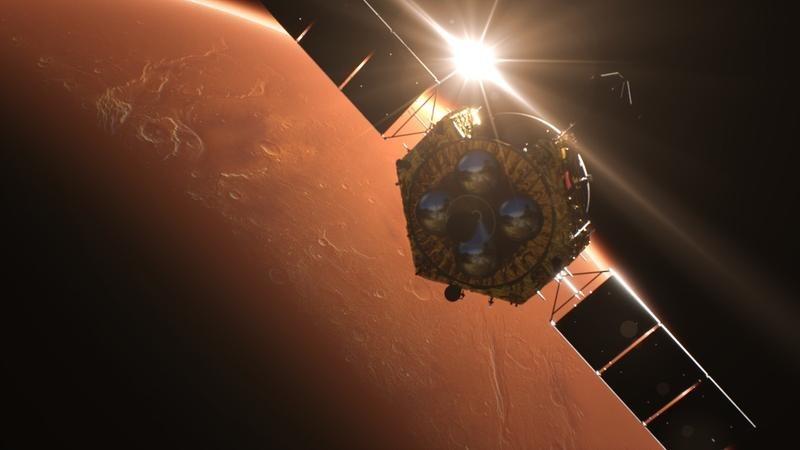Mars rover and orbiter continue mission after sun outage


China's Mars rover and orbiter have resumed operations after a month-long suspension caused by a sun outage, according to the China National Space Administration.
Mission controllers have reestablished their tracking, communication and control of the orbiter and rover, which had been in normal condition during the period that started in mid-September, the administration said in a brief statement on Friday.
A sun outage refers to a phenomenon when Mars and Earth move to either side of the sun and the three are almost perfectly aligned. During this period, solar electromagnetic radiation increases and strongly disrupts communications between craft and the Earth.
After they resume operation, the Zhurong rover will continue traveling south toward an ancient coastal area on Utopia Planitia, a large plain within the largest known impact basin in the solar system, for scientific exploration. The orbiter will enter a new Mars orbit to carry out a remote-sensing global survey of the red planet, and will continue relaying signals between Zhurong and Earth, according to Zhang Rongqiao, the Tianwen 1 mission's chief designer.
Before the suspension, Zhurong had traveled nearly 1,100 meters on the Martian surface and was in good condition with sufficient energy, Zhang said.
The core component of the Tianwen 1 mission, the country's first interplanetary adventure, the 240-kilogram Zhurong has outlived its three-month life expectancy with all its predetermined tasks completed.
The 1.85-meter-tall rover, which is now several million kilometers from Earth, is the sixth rover on Mars, following five others launched by the United States.
Tianwen 1, named after an ancient Chinese poem, was launched on July 23 last year from the Wenchang Space Launch Center in Hainan province and traveled more than 470 million kilometers, carrying out several trajectory maneuvers before entering Martian orbit on Feb 10. Zhurong touched down on the planet on May 15 and separated from its landing platform a week later.
The mission has generated more than 420 gigabytes of primary data, with Zhurong alone having obtained about 10 GB of primary data, according to sources at the space administration.
- China plans to play a bigger role in Antarctic governance
- Striking the right note to advance climate change action
- Shanxi ends province-wide blanket fireworks ban
- Audit: China fixes bulk of fiscal problems tied to 2024 budget
- China reports major gains in circular economy
- Chinese lawmakers review draft revision to banking supervision and regulation law





































